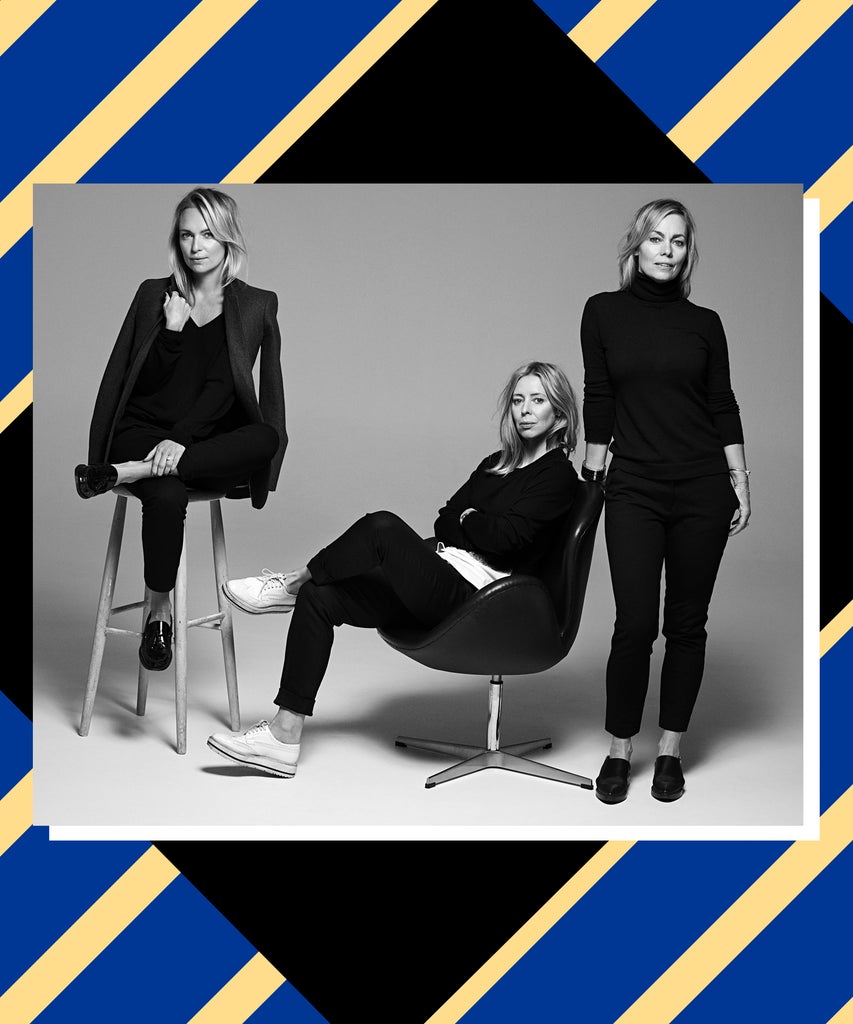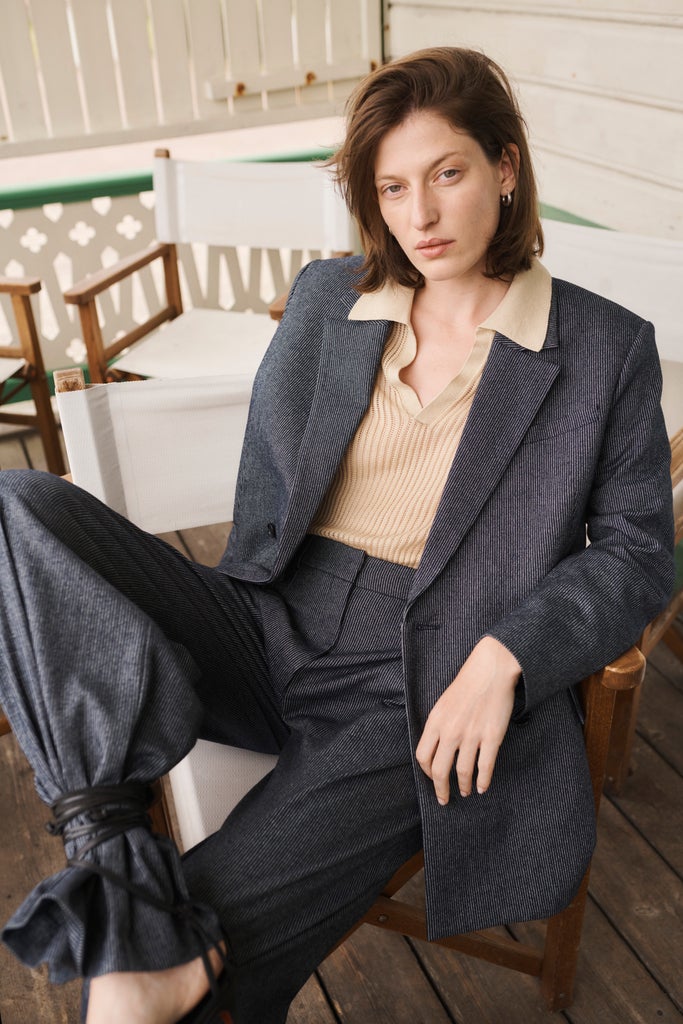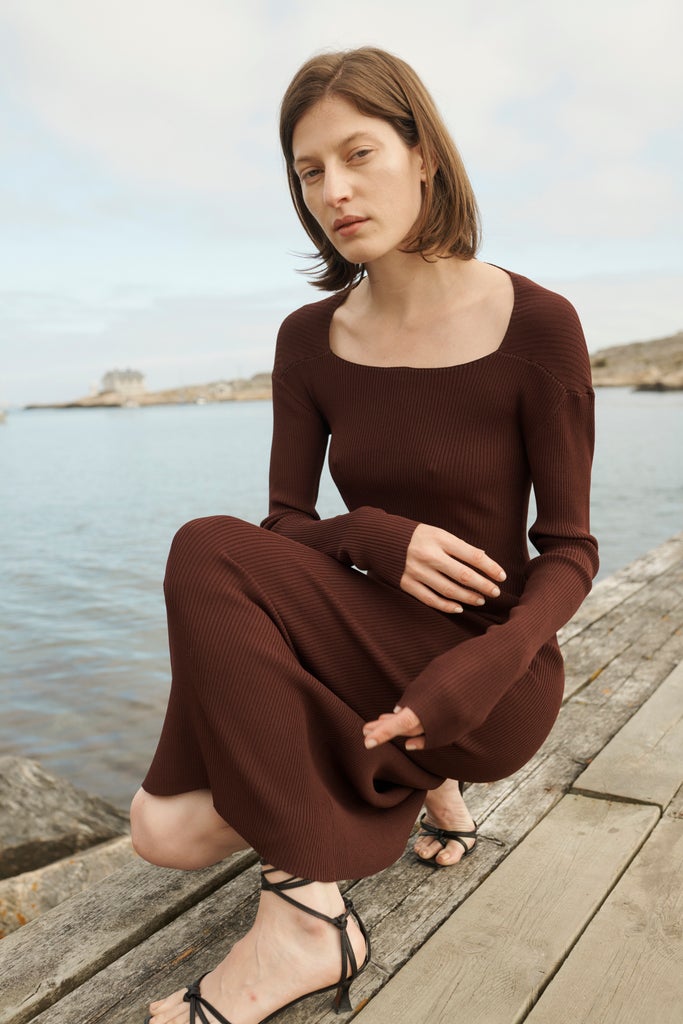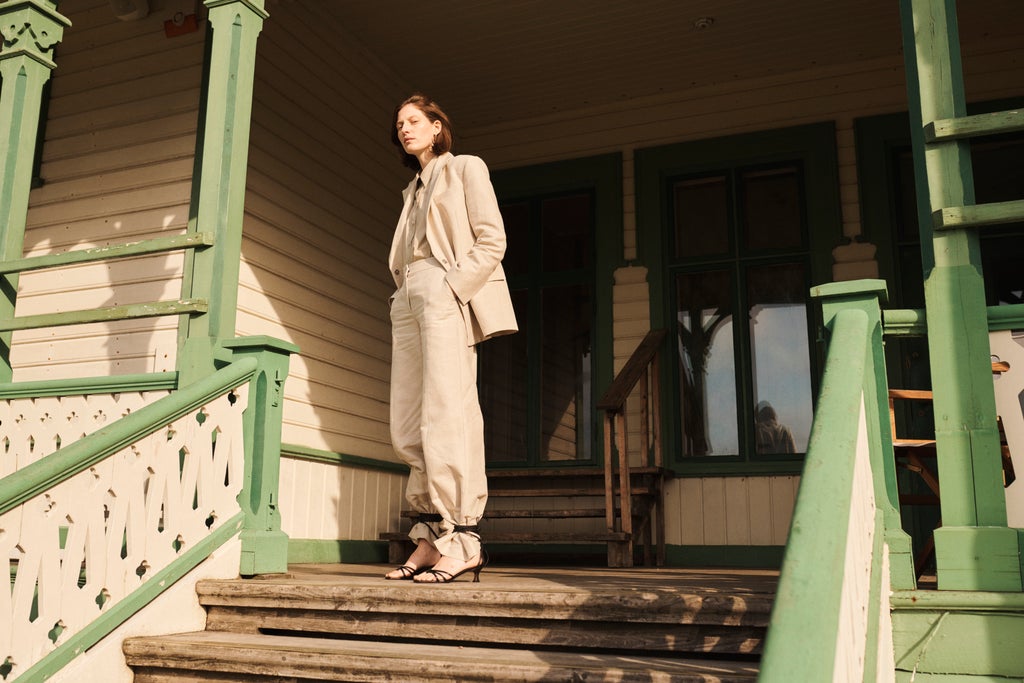We’re Obsessed With This Sustainable Swedish Brand

House of Dagmar was established in Stockholm in 2005 by Karin Söderlind, Kristina Tjäder, and Sofia Wallenstam, three sisters on a mission to create truly sustainable, low-impact fashion — meaning, unlike much of the competition, they’re not just throwing around buzz-words.
On their website, there’s a timeline of Dagmar’s accomplishments, from the introduction of certified mulesing-free merino wool in 2008 to the revolutionary launch of what the brand calls “animal-friendly fur,” or mohair wool that is sewn onto cotton, not unlike how wigs are made. The brand has used the technique, continuously adapting it (cruelty-free shearling, anyone?) ever since.
They’re also open about the fact that the journey to sustainability is just that — a process. “Sometimes it feels like we don’t know anything, either,” said Wallenstam, the youngest of the sister trio, as she and her older sister Karin walked me through their spring ‘20 collection in the brand’s Stockholm showroom. Instead of letting the unknown get them down, the brand began measuring their eco footprint in 2017, which they post to their website each year, in order to learn how they can improve it. By calculating the brand’s specific water and waste consumption, as well as their carbon footprint, they were able to learn details about the fabrics and practices that they were utilizing, including information that could reflect negatively on Dagmar.
“We always thought that natural fibers were good, but then you learn that the production of it is not good, so you have to keep learning,” Wallenstam continues. “It’s fun to try new things and keep people informed with our products, whether it’s creating down jackets out of recycled bottles or coming up with new ways to manufacture leather,” both of which the brand has done over the years, designing puffer coats from recycled PET-bottles and leather pants using chrome-free leather.


“Because chrome is really damaging to the environment and also cancer-causing for the workers, we’ve started using chrome-free leather,” Söderlind explains. “Truly sustainable manufacturing considers the people, the environment, and the animal, so that’s what we try to do here. For the leather, we use better vegetable oil and chemicals, as well as a closed-loop system — a system that keeps chemicals from being released into the environment — to avoid the chrome from entering into nature and putting the workers in danger.”
The brand is also busy experimenting with sustainably produced viscose, which, when made with natural wood, often uses dangerous chemicals that are damaging to the environment. They’ve also just opened a new store in Stockholm, which only sells pieces from the brand’s Good Choice label, a subset of the brand that was created in 2019 to help customers identify sustainable pieces from Dagmar. All pieces from the brand that are made from ethically produced and environmentally friendly materials wear a Good Choice label. Now, a store dedicated solely to those pieces will be housed in Sweden’s capital.

And it’s something they’ve been working on since the beginning, Söderlind told me. “When we started the company, there were three goals that we had in mind — all of which boil down to what in today’s terminology is called sustainability. When we started in 2005, that wasn’t really around at all.” Many of today’s top brands are struggling to implement sustainable practices into their production, but a widespread change in protocol will never be necessary for House of Dagmar. “For us, it’s just been so certain and in our bones all along. After just a few years, we were like, oh wait, what we’re doing is sustainability.”
Just for their pieces to be sustainable isn’t enough, though. The goal for Dagmar is bigger than that. “If we can make other brands out there feel as if we’re at the forefront — not that it’s a competition because this is one of the only things that you don’t want to compete with anyone about — then it’ll make our competitors want to fight to keep up with us. If that happens, the world will be better,” Söderlind says. “People need a little kick in the ass.” And that’s exactly what Karin Söderlind, Kristina Tjäder, and Sofia Wallenstam are prepared to dole out.
Like what you see? How about some more R29 goodness, right here?
This Fashion Startup Is Disrupting The Sale Cycle
Shiona Turini On How To Build A Career In Fashion
The Women-Run Fashion Houses Changing How We Dress
Thanks for reading.
Please Share, Comment, Like the post And Follow, Subscribe CTS Store.
fromSource




Post a Comment